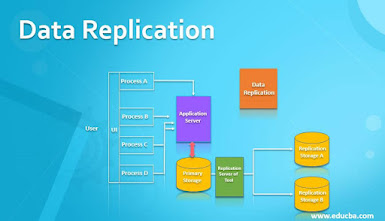"Unlocking Data Transformation: Migrating from SAP HANA to Snowflake"
In today's rapidly evolving data landscape, businesses increasingly rely on cutting-edge solutions to harness the full potential of their data. SAP HANA, a high-performance in-memory database, has long been a stalwart choice for enterprises. However, as organizations shift toward cloud-based data warehousing, Snowflake emerges as a formidable contender. This article explores the significance of migrating from SAP HANA to Snowflake, the advantages it offers, and the strategies for a seamless data transition.
Why Migrate from SAP HANA to Snowflake?
1. Cloud-Native Architecture
Snowflake is born in the cloud and designed
for the cloud. It provides a highly scalable and flexible data warehousing
solution that seamlessly integrates with popular cloud providers like AWS,
Azure, and Google Cloud. This cloud-native approach eliminates the need for
on-premises infrastructure and offers greater agility.
2. Scalability
Snowflake's unique multi-cluster, shared
data architecture allows you to scale compute and storage resources
independently. This flexibility ensures you can meet the demands of your
evolving data requirements without over-provisioning or incurring unnecessary
costs.
3. Cost Efficiency
Snowflake's consumption-based pricing model
means you only pay for the resources you use. This contrasts with SAP HANA's
upfront licensing costs and hardware investments, making Snowflake an
attractive option for cost-conscious organizations.
4. Data Sharing
Snowflake excels in data sharing, allowing
organizations to securely share data with external partners, customers, or
collaborators. This feature fosters data-driven collaboration while maintaining
data governance and security.
Migration Strategies for SAP HANA to
Snowflake
1. Data Extraction and Transformation
Begin by extracting data from SAP HANA
using appropriate ETL (Extract, Transform, Load) tools or scripts. Pay close
attention to data mapping and transformation to ensure data consistency and
integrity during the migration.
2. Data Loading into Snowflake
Load the transformed data into Snowflake,
taking advantage of Snowflake's easy-to-use data loading tools and
capabilities. Ensure that data is appropriately structured in Snowflake's data
warehouse.
3. Compatibility Testing
Conduct rigorous testing to validate the
compatibility of your data, applications, and queries in Snowflake. This step
is critical to ensure that your migrated data functions as expected.
4. Data Validation
Verify the accuracy and completeness of
your migrated data through data validation processes. Identify and address any
discrepancies or data quality issues before finalizing the migration.
5. Optimize Queries and Workloads
Review and optimize SQL queries and
workloads to leverage Snowflake's performance capabilities fully. Snowflake's
unique architecture may require query optimization to achieve optimal results.
Benefits of SAP HANA to Snowflake Migration
1. Scalability
Snowflake's ability to scale resources as
needed ensures your data infrastructure can grow with your business,
accommodating increasing data volumes and user demands.
2. Cost Savings
Migrating to Snowflake often results in
cost savings by eliminating the need for expensive SAP HANA licensing and
on-premises infrastructure.
3. Cloud Flexibility
Snowflake's cloud-agnostic nature allows
you to choose the cloud provider that best suits your organization's needs
while maintaining the benefits of a cloud-based data warehouse.
4. Enhanced Data Sharing
Snowflake's data sharing capabilities
facilitate collaboration and data exchange, supporting data-driven
decision-making both within and outside your organization.
migrating from SAP HANA to
Snowflake represents a strategic move toward a cloud-native, scalable, and
cost-efficient data warehousing solution. As organizations continue to adapt to
evolving data requirements, Snowflake emerges as a powerful choice for those
seeking to transform their data management and analysis capabilities. Careful
planning, data transformation, and thorough testing are key to ensuring a
seamless and successful migration from SAP HANA to Snowflake.




Comments
Post a Comment